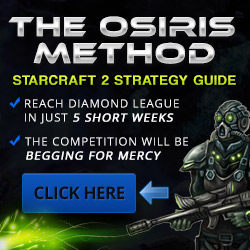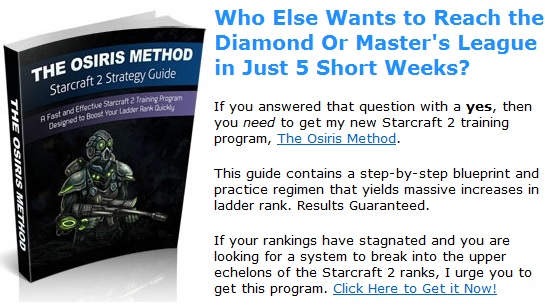Starcraft 2 Zerg Units ListStarcraft 2 Strategy Guide --> Zerg Guide --> Zerg Units List (you are here) This guide provides everything you need to know about Zerg units in Starcraft 2. The first section discusses Zerg unit mechanics, discussing aspects unique to the Zerg race like regeneration and evolution. The bulk of the units list can be found in three tables in the middle of this page. The first table discusses the basic information of each unit, including its cost, build time, prerequisites, and from where it is produced. The second table provides information on each unit's states, including unit type, damage, attacks, range, movement speed, and armor. The final table reveals the abilities and upgrades available to each Zerg unit in Starcraft 2. Finally, a guide will be provided discussing common Zerg unit combinations. Using units that work well together are key to success in Starcraft 2, no matter what race you are playing. Note: For a list of campaign-only Heart of the Swarm Zerg units, see our HotS campaign only units guide. This section will focus on the units available for play in the multiplayer version of the game. Table of Contents Zerg Unit Mechanics Zerg Unit MechanicsThe Zerg has five unique mechanics that stand out when compared to the other races: unit production, regeneration, creep, Overlords, and burrow. Unit Production The only Zerg unit that is produced by a building is the Queen. All other Zerg units are produced from Larva or from other Zerg units. Larva are automatically produced by the Hatchery or spawned via the Queen's Inject Larva ability. Larva can be selected by players and morphed into units at any time. Larva are destroyed in the process of creating a new unit. Some Zerg units are created by permanently morphing one Zerg unit into another. Zerglings can morph into Banelings while Corruptors can morph into Brood Lords. This process costs resources, requires certain tech structures, and is permanent. Zerg Regeneration Unlike Protoss units which can only recover their shields and Terran units which do not recover at all, Zerg units and structures automatically recover their health over time. This is termed regeneration. Zerg regeneration occurs at a rate of about 1 health every 4 in-game seconds (actual value is slightly faster at .27 hp restored per second). Zerg regeneration is always active. Even when the Zerg army is taking damage, the .27 health restored per second is ticking in the background. This actually matters in certain game scenarios. For example, without regeneration, an Immortal would destroy a Hydralisk in 4 shots, as the Immortal deals 20 HP per shot and the Hydralisk has 80 HP. However, during those 4 shots, the Hydralisk's native regeneration capacities will cause 1 health to be restored while the Immortal is firing off its shots. Rather than dying to 4 Immortal shots, the Hydralisk will survive with 1 HP, requiring a 5th shot to destroy it. The Zerg Creep Zerg Units move faster on the creep. The exact speed boost given is particular to the unit type. For example, Queens move more than twice as fast while on creep while the Ultralisk only moves 30% faster while on the creep. Zerg units to not recover health faster while on the creep versus off the creep. Overlords and Overseers The Zerg is unique in that its supply space is increased by adding units on rather than structures. In particular, the Overlord and the Overseer both increase the current supply cap by 8 just like a Supply Depot or Pylon. These units do not cost any supply space, so you could literally have 100s of them if you could afford to produce them. Despite not costing any supply space, these units also have multiple functions. The Overlord is able to be upgraded to function as a transport for the Zerg army as well as can generate creep. The Overseer is the Zerg's primary detector and has two abilities. One ability spawns a Changeling which can act as a spy, providing scouting information, while the other ability prevents unit production or research for 30 seconds. Burrow The Burrow technology can be researched at the Hatchery. All Zerg ground units can burrow. While burrowed, units are cloaked. Most burrowed units are unable to move or perform any actions, they just maintain their cloak. Some units have access to a few of their abilities or can even move while burrowed. Infestors can spawn Infested Terran while burrowed and can move at a reduced speed. Banelings can explode while burrowed if the action is triggered. Swarm Hosts must remain burrowed to use Spawn Locusts. Roaches can be upgraded to move quickly while burrowed as well as regenerate extra healthw hile burrowed. Zerg Units Table: Cost & Requirements
Zerg Units Table: Unit Types, Stats, and DamageIn the table below, you will find a list of all the Starcraft 2 Terran units along with the unit type, health, movement speed, armor, damage, damage bonuses, number of attacks, attack speed, and range for all the Terran units in Starcraft 2. This table includes Heart of the Swarm units. Attacks denote both ground and anti-air attacks unless otherwise noted.
Zerg Units: Abilities and Research UpgradesLike all races, many Terran units have access to a variety of abilities in addition to just their default attacks. Some of these skills are always unlocked whereas others have to be researched before they can be used during a match. Additionally, there are a variety of upgrades available that can provide increase the strength of certain Terran units. Below, you will find a chart detailing all of these abilities and research upgrades.
Common Zerg Unit CombinationsIn comparison to Protoss and Terran, Zerg armies tend to be the least balanced but most fluid of the three. Since Zerg players produce almost all of their units via Larva, they are able to switch their army composition at any time without limited investment. A Zerg player can just as easily make a wave of Zerglings as they could a wave of Mutalisks, whereas a Terran or Protoss player's production capacity of air units would be limited by the number of Starports or Stargates. As a result, Zerg players rarely stick to a single army composition. However, there are a few Zerg army compositions which work well. Perhaps the most common Zerg unit combination is Zerglings, Banelings, and Mutalisks. This is a popular combination for Zerg players to use against Terran players in particular, are Banelings are strong against Marines, while Zerglings and Mutalisks are strong versus most Terran unit combinations in the absence of Marines. Sometimes Infestors are added on for support in this combination. This unit combination is popular in the early and mid-game portions of TvZ. Banelings may be replaced by Ultralisks, Infestors, and/or Brood Lords by the late game. Another common unit combination in Heart of the Swarm is Roach, Hydralisk, and Viper. Roaches and Hydralisks are a very good combination as Hydralisks are a very high DPS unit that can hit both air and grounds units, whereas Roaches act as a shield for the Hydralisks due to their high HP and low cost. In Wings of Liberty, the problem with the Roach/Hydra army was that it was weak against siege units with splash damage were long-ranged units with splash damage. In particular, Siege Tanks and Colossi were very strong against this unit composition. However, the Viper has changed this dynamic. The Abduct ability can be used to pull in Siege Tanks and Colossus. The Blinding Cloud ability can also be used to disable Siege Tanks. By negating the biggest weaknesses of the Roach and Hydralisk army, the Viper has made Roach and Hydralisk armies viable even in the late game. In the late game, a great army composition for anti-ground is the Ultralisk and Infestor. Ultralisks do splash damage, but they are a melee unit. A good player will be able to reduce the Ultralisk's damage by spreading out their ranged units and kiting to minimize the Ultralisk's uptime. Fungal Growth can be used to lock units down, allowing the Ultralisk to clean them up with ease, dealing full DPS the entire time. Note that most Zerg armies include Zerglings. This is simply due to the fact that the Zergling is the only offensive Zerg unit that does not actually cost vespene gas. Leftover minerals not being used to increase the Zerg's economy or for automated defense should be spent on Zerglings. You do not get to keep the minerals for the next game, so you might as well spend them! Since Zerglings are not always very effective in direct combat in the late game due to not having much HP, most players take advantage of their high DPS movement speed by using them to sneak attack enemy expansions or rushing them into the main base while the enemy is distracted and attacking production or tech facilities. Zerglings are often used in reinforcement waves as well due to their fast production time and movement speed. There are other viable options for Zerg players in Starcraft 2. These are just a few examples that are used in competitive play. |
Don't be shy - share this page on G+ and Twitter!
Sign up for my Free Starcraft 2 Mini-Course where I reveal my best strategies not seen anywhere on this site!
Starcraft 2 Strategy Guide Privacy Policy Contact Us Disclaimer
©2013 www.osirissc2guide.com

